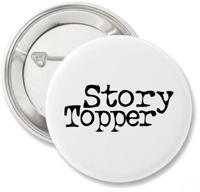One of my favorite Dilbert strips is one where Dilbert, Wally and some old guy were having a lunch discussion.
Wally: We didn’t have ones. I once wrote an entire program with just zeros.
Dilbert: You had zeros? We had to use the letter “o”.
Sound familiar? How many times have you been in a conversation where people started “besting” each other’s stories?
When I read that strip many years ago I started to notice how often that happened and worse yet how often I did it. I don’t recall the last time I heard a conversation where someone told a story that someone else didn’t try and top it. Add a bunch of engineers and you greatly increase the odds.
Try this sometime – look closely at a person when they are telling a personal story. Notice how they stand, the look on their face, the sound of their voice and their general engagement. Pretty cool, huh? Now watch that same person as the next guy tops their story. Notice the shoulders kind of sag? How about their body closing up a little bit? Do they look a little less engaged? That’s because they are.
Intentional or not, Story Topping is a very disheartening exercise. At its worst those topped can be insulted – at it’s best it’s a missed opportunity to make someone feel good.
People tell stories at some risk to themselves. Stories are often told because a person thinks they have something of value from their own experience. Imagine if you were to immediately respond to their story with “That’s the stupidest story I have ever heard.” Granted you probably wouldn’t but clearly the teller’s ego would be shot because you devalued something they thought had value. Do that more than once and you are likely not getting invited to their house for dinner anytime soon.
Though much more subtle, Story Topping yields a similar result. Story Topping is equivalent to one of the Top 40 Killer Phrases in the English Language – the dreaded “Yes, but”. Every person that tops a story is basically saying “Mine is better” which is translated by the listener as “Your story sucks.”
I mentioned earlier that Story Topping is at best a missed opportunity. Imagine someone has just told a story, trusting you with something that they value. In my imagined world everyone has read this column and even though they all have even cooler stories they know better than to top the story.
Wally: <crickets>
Dilbert: I like pie.
Ok, good start – at least no Story Topping, but sill short of a potentially good conversation, Here’s the chance to fill in the opportunity that was missed by practicing a little active listening.
Wally: Wow, that sounds brutal. How did you debug that kind of code?
Dilbert: I like pie.
Ok, so Dilbert is still getting a very strange stare from the other two but I will guaranty that the Old Guy is feeling quite good about his contribution. Instead of Story Topping, Wally practiced Story Engagement.
The examples above are really overt and rather artificial. Story Topping is often more subtle to spot. However you can recognize it when you listen to someone talking and you feel this real strong urge that feels like “wait ’till they hear this.” That is your body’s way of telling you there is a dangerous fork in the road – make the wise choice.
Today’s Challenge
Today, start with step 1 of the 3 part IRE challenge and move through the other two as you get better.
- Identify – Recognize the “wait ’till they hear this” feeling.
- Resist – Just say no to telling your story, even if you have the perfect story that will make you look like Superman.
- Engage – Find a way to reflect on their story by asking a question or engaging in related dialog about their tale.







